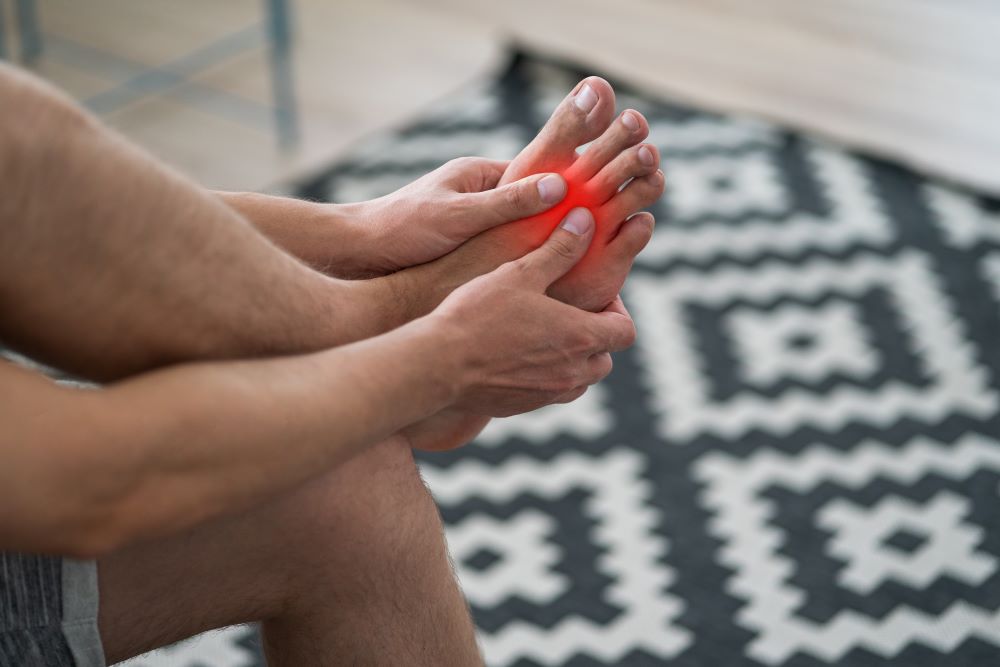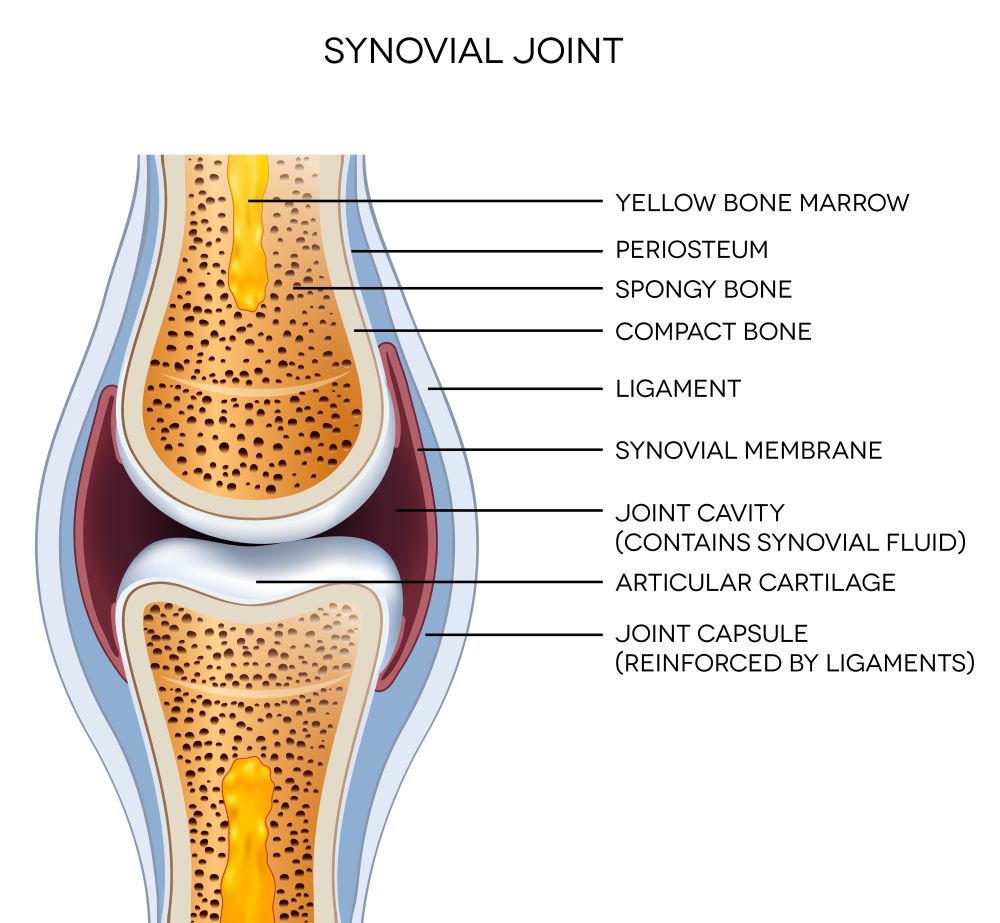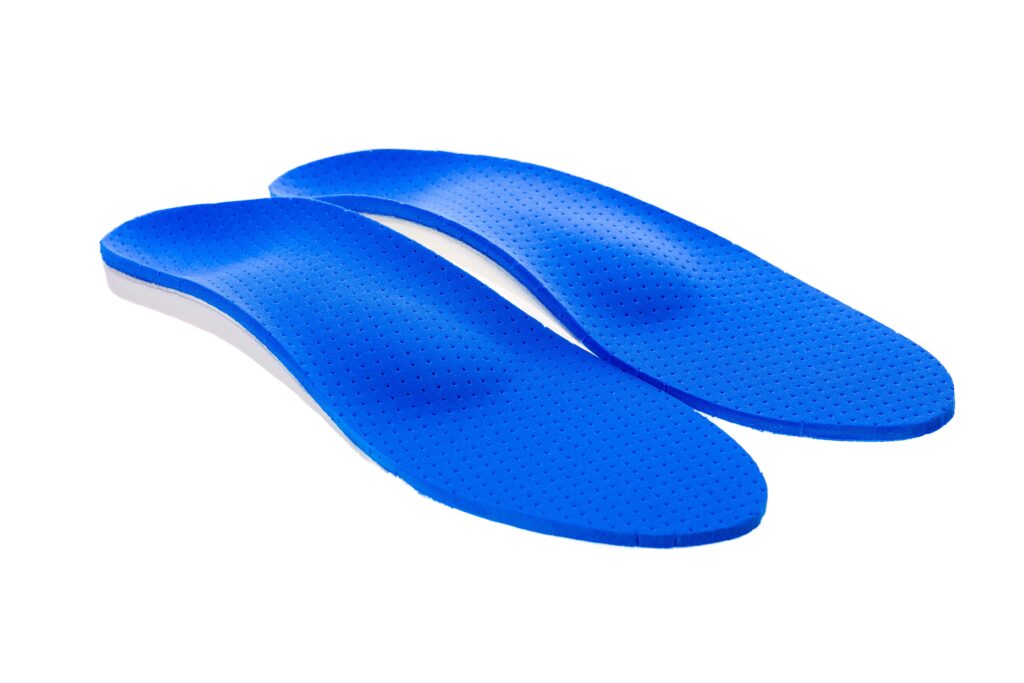
Capsulitis is inflammation of the structure that surround the toe joints (joint capsule). The joint capsule is a fluid-filled outer covering that joins two bones together.
Capsulitis most commonly affects your second toe, but can affect other joints in your forefoot and is often associated with a bunion.
Capsulitis of toe joints is seen as a common condition of the forefoot and can occur at any age.

Causes
Capsulitis can occur from multiple factors:
- Weight – If you have a higher than average BMI you are more at risk.
- Strength – poor strength within the core foot muscles and lower limb.
- Footwear – soft, flexible soled footwear provide little support in the forefoot which can increase the stresses going through the small joints of the foot. Wearing footwear with a high heel also increases the stress on these tissues.
- Altered Foot Function – The presence of existing foot deformities such as hallux valgus (bunions), a short 1st toe, flat feet or hammertoe can all lead to overloading within these joints.
- Other Medical Conditions– Osteoarthritis and many inflammatory joint diseases (e.g. rheumatoid or psoriatic arthritis) affect the small joints in the foot making them more vulnerable to this condition.
- Sporting Activities – Certain sporting activities increase the load on these small joints such as running and activities on uneven surfaces
- Occupation – Certain occupations may lead to greater strain on these joints.
Symptoms
The most common symptoms of capsulitis include:
- Pain in the ball of the foot or base of affected toe.
- Pain, swelling and redness around the toe joint due to joint inflammation.
- Reduced strength within the affected toe.
- Difficulty walking/weight bearing
- In some cases, swelling can irritate nerves and cause altered sensation.
How long will it take to get better?
It depends on the severity of the inflammation and underlying cause of the condition – it can take up to several months. However with exercises and lifestyle changes you may see improvements in your pain and walking earlier and help prevent a deterioration of your injury.
What can I do to help my capsulitis?
Treatment is aimed at reducing the stress and load through the affected joint to allow heal and improving strength around the affected joint.
Changes in lifestyle can also be helpful to aid in your recovery. The one person who can help you manage your symptoms is you.
Footwear
One of the most important changes you can make is to your footwear.
- Avoid walking in bare feet until your pain has resolved
- Avoid high heeled shoes or shoes with a flexible sole as these place increased stress on the joints of the forefoot.
- Avoid shoes which cause you to claw your toes such as flip flops / mules / crocs.
Look for a shoe that has the following qualities;
- Heels should be broad and no more than 1.5 inches high.
- Soles should be firm and non-pliable.
- Deep fitting footwear will provide plenty of room for your toes and accommodate any potential toe deformity.
- Lacing or Velcro straps to hold the shoe firmly to the foot. E.g. running or walking shoe
- A rocker at the forefoot can limit bending of the joint during gait and therefore reduce pain – see picture below. See our footwear advice video or our footwear advice section for further guidance.

Targeted strengthening and stretching exercises for the muscles in and around your foot and ankle can help to improve your symptoms. Local NHS Ayrshire & Arran podiatrists have devised exercise videos to help with strengthening the correct muscles.
Ice
Icing can be beneficial in the first 2-3 days following injury or to help manage any flare ups of pain. Please click here for more advice on how to ice your foot. Some people do find continual benefit of regularly icing for several weeks following the injury.
Topical creams/gels
Applying anti-inflammatory gel across ankle joint can provide some symptomatic relief in the short term.
Oral pain medication
Non-steroidal anti-inflammatories medication can sometimes be prescribed by your GP.
Weight management
If you have a higher than average body mass index (BMI) you are more at risk. You can access further support with managing weight.
Foot orthoses
Foot orthoses may be considered if self-management and exercises have not improved your symptoms. Your local MSK podiatrist may prescribe some foot orthoses to wear in your shoes to try and offload the joint. Relief can be felt from a stiff, firm insole or one which provides a metatarsal support at the painful joint.

Investigations and surgery
Do I need a scan?
Capsulitis is usually diagnosed primarily via a physical examination and patient history. X-rays and additional imaging tests such as diagnostic ultrasound scans can also be used to confirm capsulitis and evaluate the extent of deformity.
Will I need surgery?
Surgical management is not usually considered unless you have tried all of the above measures and continue to have difficulty walking. If all non-surgical treatment has failed or you have developed a fixed toe deformity then it may be appropriate for a referral to an orthopaedic surgeon to consider a surgical intervention.
Exercises
The exercises below have been provided to help with your ankle osteoarthritis. If there is any doubt about your fitness to do these exercises then please discuss this with your GP.
You may find that these exercises may slightly increase your symptoms initially. However you should find the exercises themselves will become easier to do and that you begin to move your foot and ankle more easily. The exercises can take up to 12 weeks for you to notice a great improvement.
If these exercises cause a large increase in your pain or after 12 weeks there are no noticeable changes in your day to day symptoms then please contact your GP or NHS inform for more advice.
Pain during exercise

Within the scale, aim to stay in the green or amber boxes. If you are in the red area then you can modify the exercises by:
- reducing the amount of movement during an exercise
- reducing the number of repetitions
- reducing the weights
- reducing your speed
- increasing rest time between sets
Pain after exercise
Your pain or other symptoms should return to your pre-exercise baseline within 30 minutes of exercising. On the morning after your exercises, you should not feel an increase in pain or stiffness that lasts longer than 60 minutes.
Disclaimer
Please note: These exercises should not be used without prior consultation with a medical professional as the use of the wrong exercise may cause additional health related issues and discomfort. NHS Ayrshire & Arran and MSK NHS Ayrshire & Arran are not liable or responsible for any harm, losses or damages whatsoever resulting from the use or misuse of the information contained in or implied by the provided information in each video. These are provided for information only.
If you have any concerns about your ability to perform exercise then please discuss your concerns with your doctor or healthcare provider prior to participating in any advice that is on the MSK NHS Ayrshire & Arran website.
It is recommended to use your ice pack (cryocuff) or cool pack after your exercises to reduce the pain and discomfort this may cause.
Please choose the most relevant exercise section for you.
1. Seated Toe Grip Strengthening Using a Ball Exercise
This is performed in seated position.
Using a small spiky ball. Try to grip the ball with your toes and keep repeating this action. If you get a good grip on the ball try to pick it up.
Aim to build to 3 sets of 15 reps daily.



2. Seated Toe Grip Strengthening With Towel Exercise
This is performed in seated position.
Use your toes to begin crunching the towel up with the aim of pulling the towel in towards you, do this in a slow controlled manner whilst maintaining your heel on the ground. When you have pulled the towel in as far as possible straighten it back out again.
Aim to build to 3 sets of 15 reps daily.



3. Toe raises
This exercise is performed in a seated position. Place your feet flat on the ground.
Lesser Toe Raises – Keep your big toe touching the floor and lift the other toes. Relax the toes back to floor.
Big Toe Raise –Start in a seated position, with feet flat on the floor. Keep your lesser toes touching the floor and lift the big toe. Relax the big toe back to floor.
Repeat each exercise 10 times.
Do this exercise once per day.




4. Resistance Band Strengthening Exercise For Toe Flexor Muscles
This is performed in seated position.
With your leg bent comfortably at 90 degrees with your foot placed flat on a strip of resistance band. Pull the end of the band over your knee towards you which in turn will pull your toes up into a flexed position. Anchor the band on your thigh maintaining a good level of tension on the band throughout the exercise. Hold the band tight and begin to slowly push your toes down towards the ground against the resistance of the band, when your toes reach the ground allow them to slowly raise back up to their starting position.
Aim to build to 3 sets of 15 reps daily.


5. Resistance Band Strengthening Exercise For Toe Extensor Muscles
This is performed in seated position.
Cross the affected foot over the opposite knee. Then place a resistance band around the top of the foot to pull the toes away from the body so your toes are in an extended position. Maintain a comfortable level of tension on the band throughout the exercise. Hold the band and begin to slowly pull your toes up towards your body against the resistance of the band, then slowly lower them back up to their starting position. There will likely be minimal movement however over time you should see an improvement in the muscle strength.
Aim to build to 3 sets of 15 reps daily.


6. Seated Short Foot Exercises
Start in a seated position with your foot flat on the ground. Straighten your toes and press them gently into the ground whilst sliding the ball of your foot back towards your heel and lifting the arch of your foot. Be careful not to claw your toes whilst doing this exercise or lift the ball of the foot off the ground. Hold for 5 seconds.
Aim to build to 3 sets of 15 reps daily.


7. Standing Short Foot Exercise (progression)
Start in a standing position and straighten toes and press them gently into the ground whilst sliding the ball of your foot back towards your heel and lifting the arch of your foot. Be careful not to claw your toes whilst doing this exercise or lift the ball of the foot off the ground. Stand close to a wall or hand rail to aid with balance if required. Hold for 5 seconds.
Aim to build to 3 sets of 15 reps.


8. Seated Towel Calf Stretch – Knee Straight
Place a towel around the ball of the affected foot and avoid bending your knee. Pull the towel toward you until you feel the stretch in the bottom of your foot and back of your calf muscle.
Hold the stretch for 30 seconds and repeat 3 times.


9. Seated Towel Calf Stretch – Knee Bent
Place a towel around the ball of the affected foot and bend your knee. Pull the towel toward you until you feel the stretch in the bottom of your foot and back of your calf muscle.
Hold the stretch for 30 seconds and repeat 3 times.


10. Standing Calf Stretch – Knee Straight
Place your hands on a wall for support and take a step back with the affected foot. Now begin to bend the knee of your front leg whilst moving your chest towards the wall until you feel a stretch in the back of you calf muscle.
Hold for 30 seconds and repeat 3 times.


11. Standing Calf Stretch – Knee Flexed
Adopt the same starting position as you did for the previous exercise. Slide the affected foot towards the front foot as demonstrated. This time when bending the front knee, also bend the knee of the back leg until you feel a stretch deeper in the calf muscle.
Hold this for 30 seconds and repeat 3 times.

